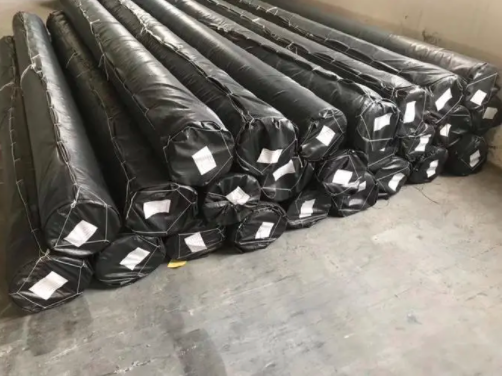- Understanding the Role of Geomembrane Liners in Waste Management
- Innovations in Geomembrane Liners for Water Management
- Geomembrane Liners: A Comprehensive Guide
- The Future of Geomembrane Liners in Civil Engineering
- Geomembrane Liners: Enhancing Landfill Stability
Manager:
WhatsApp:+86 177 0135 2670
Tel:+86 177 0135 2670
Email:marketing@okorder.com
Address:3rd Floor, No.2 Building, No.1 Sanlihe Road
The Admirable TRP Geomembrane: A Shield to the Earth
In this composite of environmental conservation and development, TRP geomembranes are silent sentinels who stand tall unnoticed but indispensable. Like a hero, I couldn’t help but marvel at these discreet champions when I start to think about the role of TRP geomembranes. In this essay therefore, let us foray into investigating the enigmatic world of TRP geomembranes as well as exploring their various applications, benefits and distinguishing factors that make them an integral part of our lives.

The Basics about TRP Geomembrane
Reinforced Polyethylene (TRP) geomembranes, on the other hand, are special types of geomembranes with increased stamina and efficiency. They contain polyethylene fabric reinforcement which makes them stronger and more long-lasting than non-reinforced ones. This trait also gives them added value for lining temporary retention ponds or landfills in cases where soil rehabilitation is required.
Multi-utility: The Versatility in Role of TRP Geomembrane
This is evidenced by their use in numerous industries such as building embankments for canals, lining diesel waste containment areas, remediating contaminated soil sites, lining wastewater impoundments and tank linings among others. They serve as a barrier against contamination from environmental media such as heap leach pads for mining operations involving evaporation ponds and tailing impoundments.
Water Industry: Importance of Clean Water to Communities
Drinking water systems like sewage treatment involve usage of them. They are great liners which protect water bodies from reaching reservoirs especially through ground waters ensuring safety and quality supplies when canals/ dams/reservoirs having been sealed using TRP geomenbrane liners.
Manufacturing Methodology: How to Create a TRP Geomembrane
Basically manufacturing process begins by selecting the right polymer resin usually found in pelletized form. Thereafter, carbon black, plasticizers, antioxidants and lubricants are added as stabilizers and to give the geomembrane more shelf life. The resin and additives go into an extruder that carries them through several stages before forcing it out of a die to create sheets with various widths and thicknesses.
The Lasting Power: Durability of TRP Geomembrane
One of the major features that distinguish TRP geomembranes is their ability to last long. They have been built to be able to withstand harsh environmental conditions such as ultra violet radiation, chemicals or extreme temperatures. The durability factor increases the service period for which the material can be used and therefore minimizes its replacement thereby reducing its effects on environment.
Eco-friendliness: A Green TRP Geomembrane
While TRP geomembranes are heroes in many respects, there are some things about them that affect the environment negatively. There could be air pollution during production process which may result into leaching harmful substances when disposed off inappropriately. However when properly employed they act as contaminant barriers making sure no pollution is caused from those materials thus preventing our ecosystems.
Cost Analysis: Investing in TRP Geomembrane
Due to different applications, TRP geomembranes come with varied prices per piece. Prices vary according to factors like thickness, size and manufacturer among others. On the other hand you can get a connection between your budget and a good quality product from a wise buyer interested in thorough research.
Installation and Maintenance: Nurturing the Guardians
Good installation is key to effective TRP geomembranes. Its growth will not be up to the potential just like planting a tree wrongly. The long life of this membrane depends on regular maintenance. It’s not about installing it and forgetting; it’s about tending it for peak performance.
The Future of TRP Geomembrane: Innovating for Tomorrow
TRP geomembranes are expected to change with new materials, technologies and methods of installation in the future. Research into biodegradable materials and improved UV resistance are among the efforts towards more sustainable and efficient TRP geomembranes.
Conclusion: Unsung heroes
After examining all these aspects of TRP geomembranes, we can see that they are more than just plastic sheets. They are our environment’s unsung heroes who tirelessly defend water bodies, confine dangerous substances and maintain structural integrity. With each one having its own particular role – HDPE being sturdy, PVC being flexible while EPDM hard-wearing – all these types of geomembranes have their own niche. “But what does a ‘TRP’ stand for?” one might ask. In any case, it has allowed us to see that there is a variety of such barriers around us.
Therefore next time you come across any form of a hindrance especially made from a polymeric barrier, spare some time to think back at why it was put there in the first place and how much good we enjoy as humans as a result of its presence.
- Previous:The Marvel of Geomembranes: Lona and Beyond
- Next:The Silent Guardian: XR-5 Geomembrane and Its Environmental Protection Expedition






